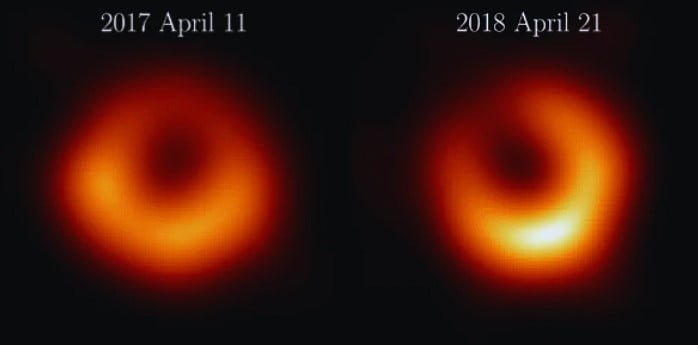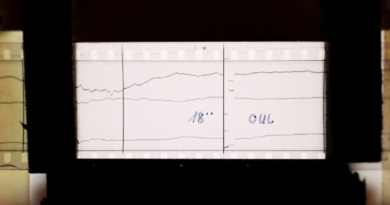Second Image of First Black Hole Validates Einstein’s General Relativity

The recently unveiled second image of the first-ever pictured black hole provides further confirmation of Einstein’s General Relativity.
The Event Horizon Telescope (EHT) has unveiled a second image of the supermassive black hole M87*, confirming the persistence of its shadow, as predicted by Einstein’s theory of general relativity. This groundbreaking discovery, captured on April 21, 2018, reaffirms the accuracy of the 1915 theory and provides valuable insights into the behavior of this cosmic giant.
The new image showcases a glowing golden ring surrounding M87*, depicting matter swirling around the black hole at extreme temperatures. The dark shadow at the center aligns with Einstein’s predictions, showcasing the consistency of this phenomenon across multiple data sets.
Scientists, led by the Academia Sinica Institute for Astronomy and Astrophysics, emphasize the significance of reproducing results in scientific endeavors. The confirmation of the ring in a new data set marks a substantial milestone and strengthens the belief that the observed features represent a true black hole shadow.
The image further validates Einstein’s theory, connecting M87*’s width to its mass. Notably, changes in the brightness of the disk indicate turbulence in the surrounding matter gradually feeding the black hole.
Situated 55 million light-years away in the heart of the galaxy M87, M87* boasts a mass equivalent to around 6.5 billion suns. It powers the active galactic nucleus, driving the elliptical galaxy’s bright core as it feeds on surrounding matter, emitting powerful magnetic fields.
The 2017 and 2018 images of M87* remain remarkably similar, affirming that the black hole’s mass and outer layer diameter, known as the event horizon, remain relatively unchanged. This aligns with predictions derived from general relativity, emphasizing the dependence of a black hole’s diameter on its mass.
While the mass of M87* has not significantly changed, the new image shows a 30-degree counterclockwise shift in the brightest peak of the ring. This anticipated variability confirms the influence of turbulent matter around the black hole.
Ongoing observations of M87* by the EHT, including data collected in 2021 and 2022, pave the way for continuous advancements in black hole astrophysics. The upcoming observations planned for 2024 aim to further push the frontiers of our understanding of these cosmic entities.
Published in the journal Astronomy & Astrophysics, this research represents a crucial step in ongoing investigations into black holes, providing a unique laboratory to test and validate general relativity theories.







